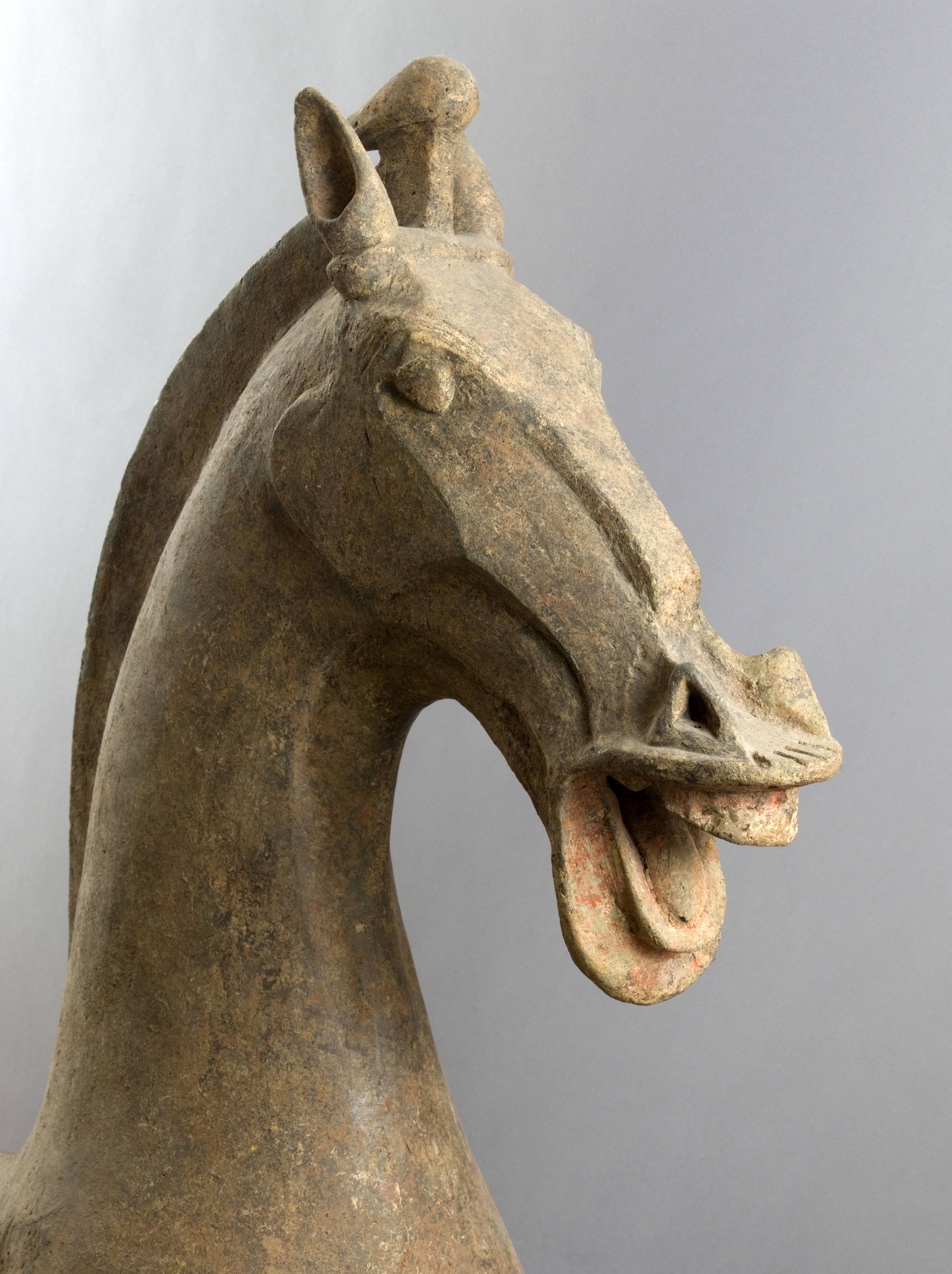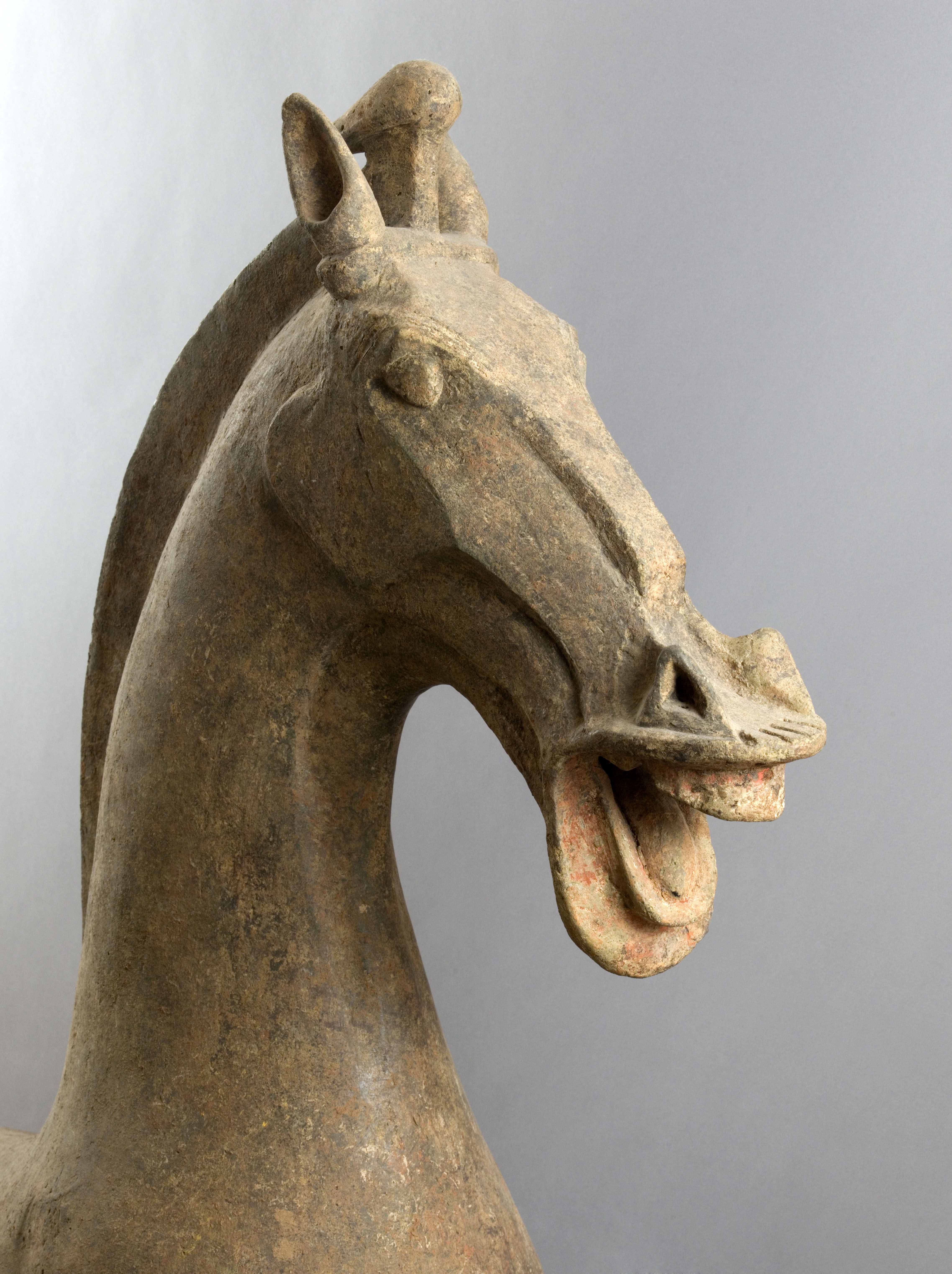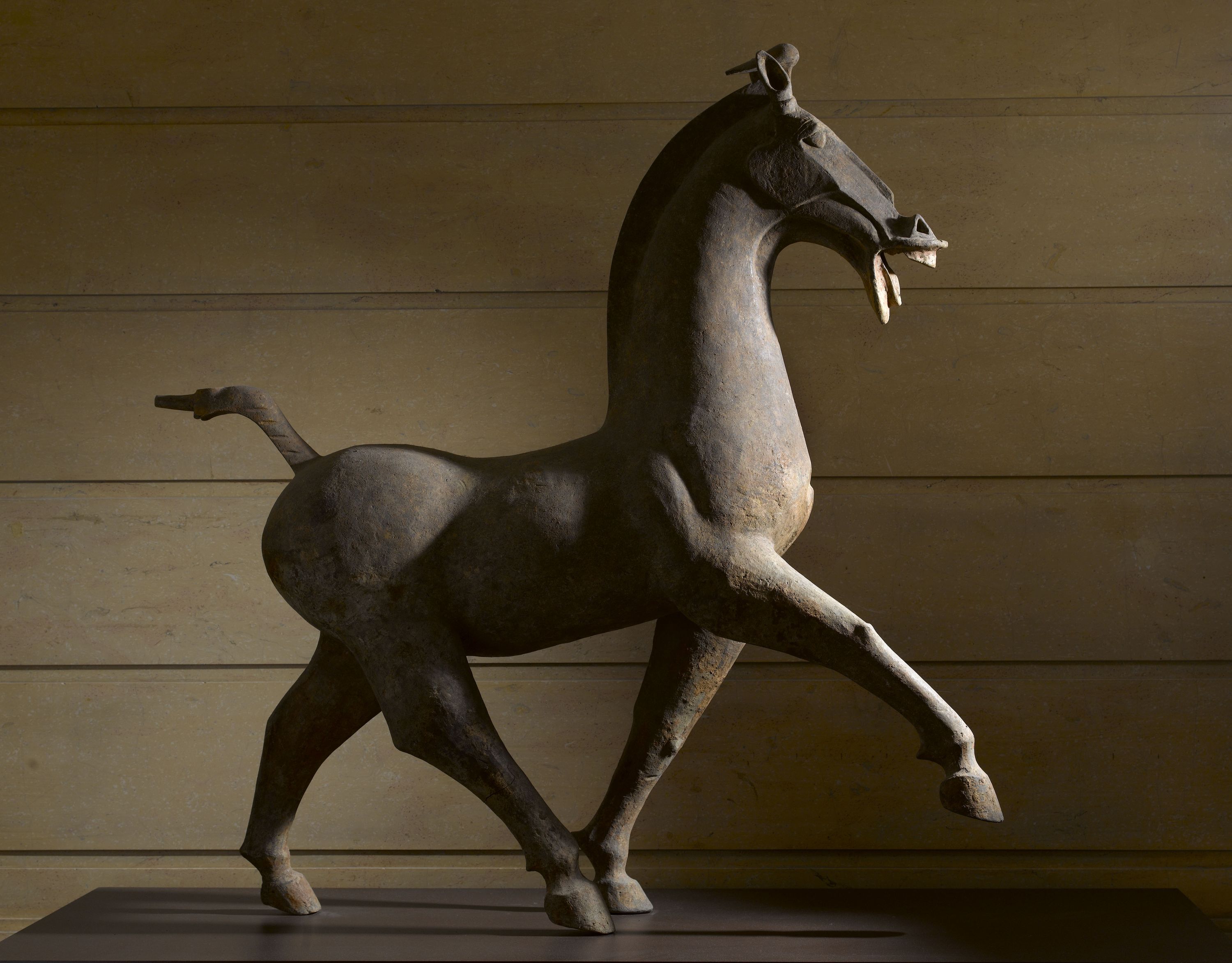
Cheval
Terre cuite, Moulage
Statue, Mingqi
Don manuel : Wahl, Eliane; Wahl, Philippe
M.C 2007-25
The historical context explains the presence of numerous horses among the grave goods of the Han period. The Chinese had long known only the small Mongolian horse. In order to resist the attacks of the Xiongnu nomads, who were occupying a vast area stretching south of the Great Wall, Emperor Wudi (r. 140-87 BC) sought alliances to the west. The travels of an imperial envoy, Zhang Qian, from 139 to 126 and after 115 BC, to the lands of the “Barbarian” peoples enabled contacts with the Wusun, enemies of the Xiongnu. They occupied the Fergana region, present-day Uzbekistan, and, further north, the Ili basin, south of Lake Balkhash. These men of robust build, with red beard and blue eyes, raised fast, purebred horses, often called “Caspians” in ancient Western literature, which soon came to be called “celestial horses” or “blood-sweating horses” by the Chinese, perhaps because of their shimmering coat.
In 121 BC, a devastating raid by the Xiongnu, halted just 120 kilometres from the capital, Chang'an, prompted a counter-offensive led by the general Huo Qubing, who defeated the them and forced their retreat far back north, liberating the region of Hexi and providing the Chinese with direct access to central Asia. From 115 BC, several prefectures were established in these western marches, including Wuwei in Liangzhou district (Gansu). The colonisation of central Asia began in 108 BC, by imperial decree. The region of Fergana, subdued by the general Li Guangli in 102 BC, was obliged to pay a tax in the form of an annual contribution to the imperial stud of a contingent of stallions, which was transported to China with great difficulty. The development of the cavalry, partly on the Barbarian model, was also related to the acclimatisation of forage clover and lucerne for the animals.
These steeds, seen as a kind of divine apparition, became a symbol of heavenly favour and for this reason, horse figures were included among the furnishing of a tomb.



